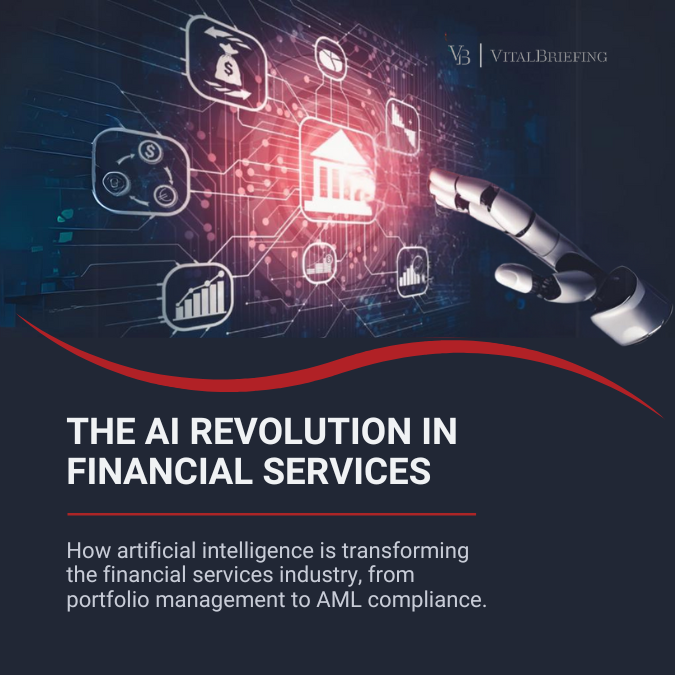The Gender Gap
The gender gap is growing.
In 2020, it would have taken about 100 years to close the gender gap. Today it will take 136 years. What has transpired to cause us to tack on another 36 years? And more importantly, what can we do about it?
In the latest event in partnership with KnowThyBrand we address these questions with leaders and advocates who have a stake in creating a more inclusive future.
The Status Quo
Kicking things off, Giulia Iannucci, Founder and CEO of KnowThyBrand reiterated why achieving gender inclusion is so important. She hit us with a shocking statistic – in 2021, 80% of the people that exited the workforce were women.
“How is this possible?” Giulia stated – well, women traditionally work in sectors that were more impacted by economic instability (i.e. hospitality) and women also tend to take part-time roles given the additional responsibilities they have at home (i.e. child care, chores, acting teacher due to the pandemic, etc).
The scary thing is, those women who exited the workforce are not coming back. A study by Culture Amp suggests that “the majority of women in the workforce feel excluded from decision making, do not feel comfortable expressing their opinions, and do not feel as though they can succeed.”
Giulia asked the attendees, “this is the world in general but what happens in Fintech?” She shared the following 3 jarring stats which demonstrate the discrepancies.
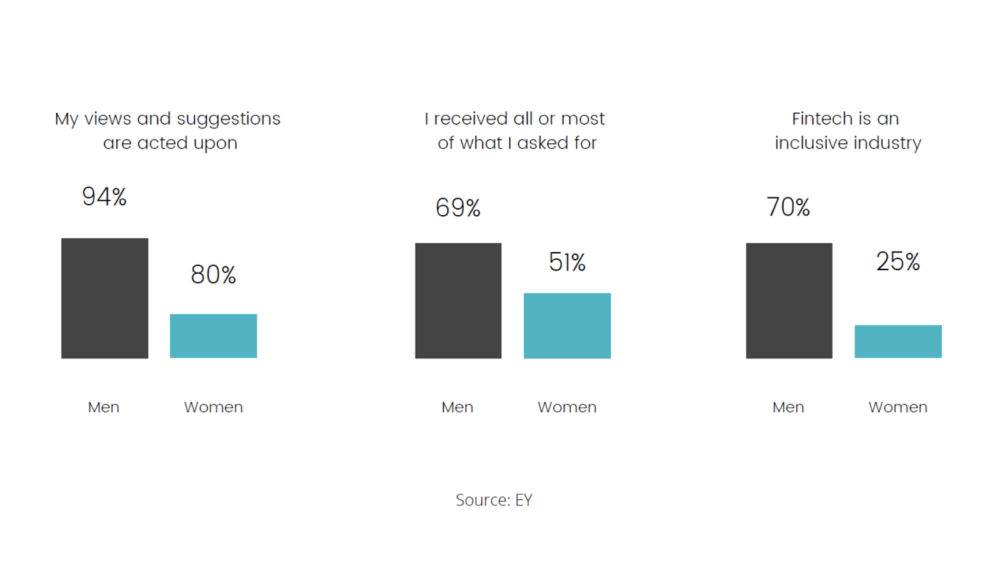
According to EY, 70% of men feel that Fintech is an inclusive industry but only 25% of women feel this way. “If men don’t see that there is a problem and they are the vast majority in Fintech, nothing is going to change” says Iannucci.
Although there are both internal and external barriers to Gender Inclusion, this event focused on tackling the external barriers which are as follows: gender bias, lack of role models, external responsibilities, harassment, gender pay gap, microaggressions, thankless tasks, pink washing, over optimistic perception of gender inclusion among others.
Before passing the torch onto the keynote speaker, Lisa Burke, Giulia reiterated that “we really want to provide some practical examples you can take away with you and implement in your companies.”
Female Groups and Motherhood
Lisa Burke, Presenter, Moderator, Science Author and Singer has had a very expansive career. With a Bachelors and Masters from Cambridge University in Natural Sciences, Lisa has spent the majority of her career working in broadcasting, first with SKY News followed by the BBC and finally at RTL Today where she is today. Perhaps an unconventional route from Sciences to Broadcasting but a very serendipitous and meaningful career for Lisa.
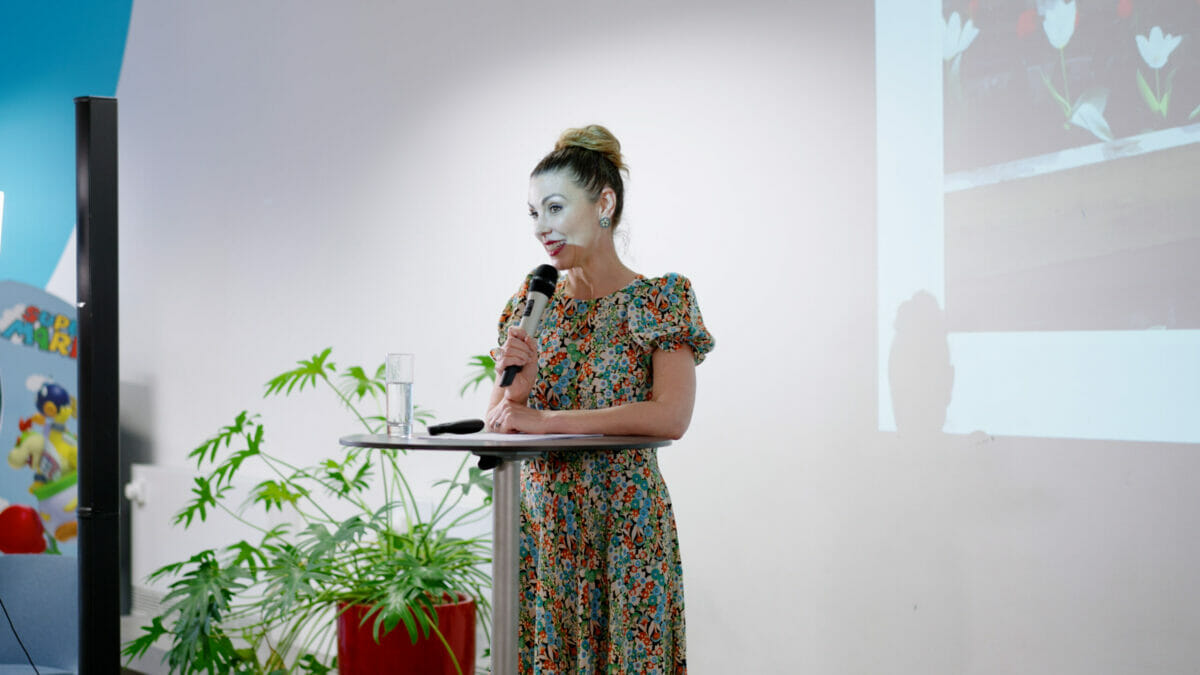
Lisa shared with us her upbringing including the fact that she was always encouraged to pursue a ‘stable’ career, hence why she went to study Sciences.
While at Cambridge, she was in an all female college. Lisa shared that “in Cambridge you do all of the subjects together…all the lab work together but you go back to your college for supervision groups, where in a small group you discuss the subjects, you do the workset together. And in the female colleges, women don’t feel intimidated and do very well as a result of that.”
Lisa again re-confirmed that “when you are in a single sex school, you don’t know that you cannot do something” and therefore women do better in terms of educational attainment as quoted below by Dr. Alice Sullivan, Institute of Education, University of London.
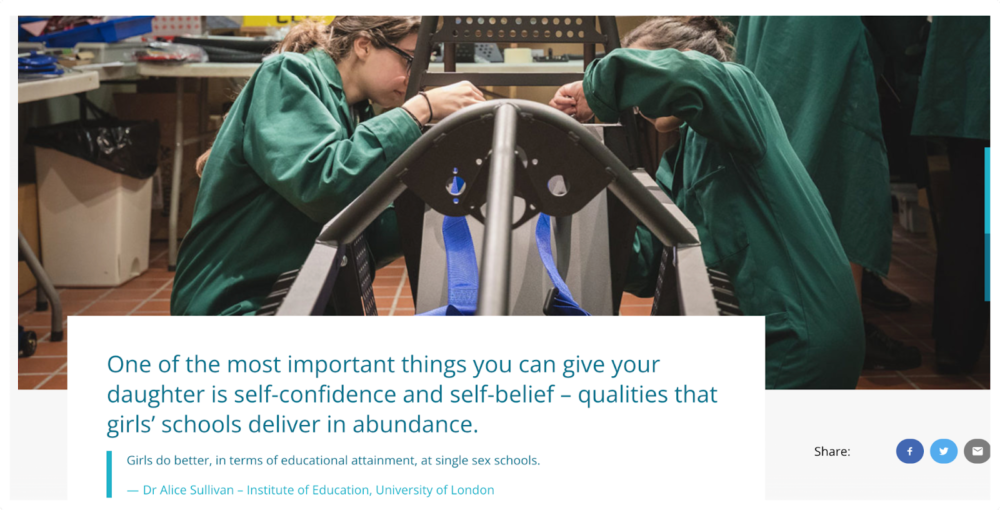
After completing her Masters, top of her class, Lisa had the opportunity to pursue a PhD but instead decided to join the workforce. And when she became pregnant several years into her career her boss said to her, “you know, you can change that”, Lisa told us.
Lisa was vulnerable enough to share her experiences and paint a picture of the work that still needs to be done. At the BBC (where she worked), “ there is more than a 1.5 million pound gap between the highest paid female and highest paid man” Lisa shared.
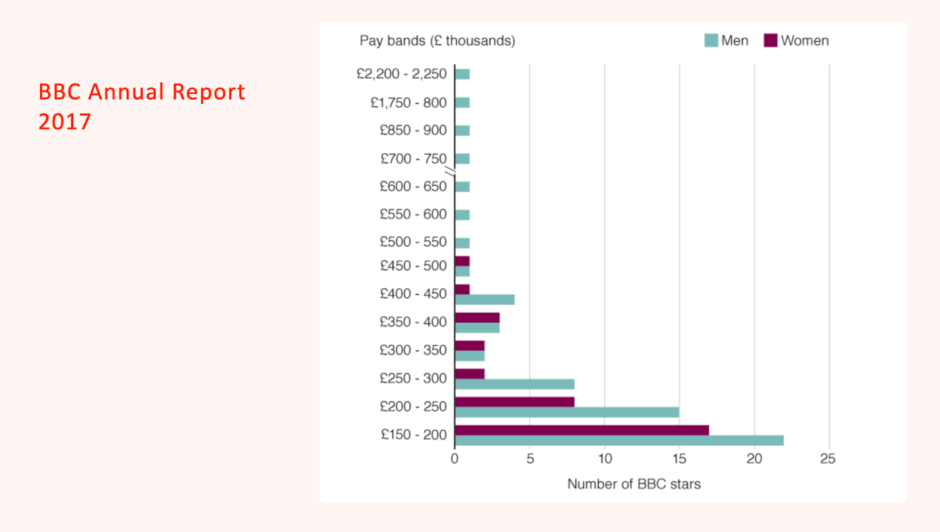
And for that to be happening at the BBC is extraordinary, but she did mention that the organization did work towards fixing it but the wage gap still not fully rectified.
To end, Lisa left us with a wish, she said “ we should have education and career linearity that is designed for women” which does not exist right now. “We should celebrate motherhood and appreciate it” and ultimately support and create more opportunities for women re-entering the workforce in their late thirties and upwards.
Equal Opportunity & ERGs
Anne-Pascale Malréchauffé is an Executive Board Member and Head of Regulatory Strategy & Compliance at Clearstream Banking. Prior to her position she held the title of Head of Group Audit at the Deutsche Börse. As an experienced leader in the banking sector, Anne’s statement of “as long as I am the only woman on the board in my bank, I am just the poster child” hits hard. In the first article of our Gender Inclusion series, we share that women only hold 20% of the executive roles in Financial enterprises so Anne-Pascale Malréchauffé sharing her story really proves that.

Her talk highlighted some of the external barriers women face, she provided examples tied to housework, childcare, role models and personality traits.
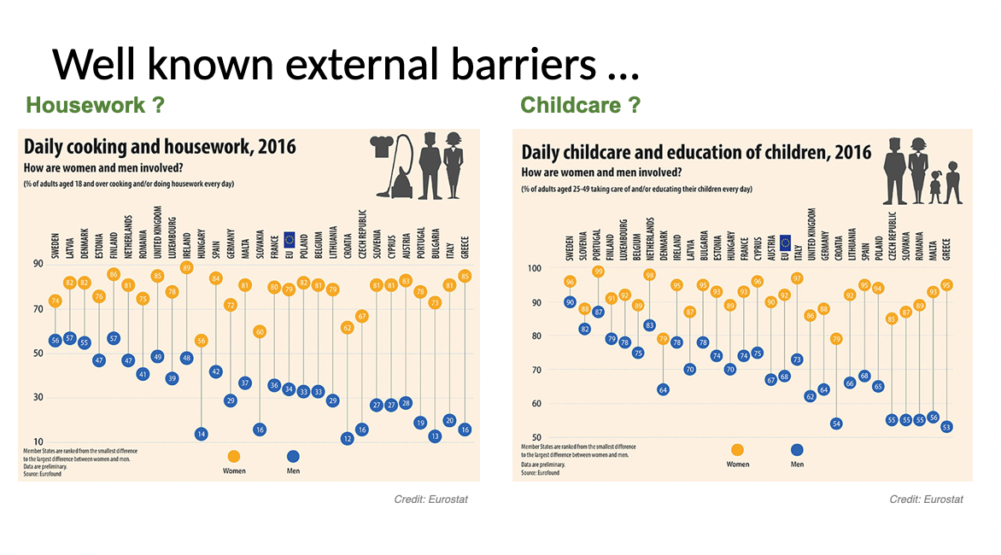
She shared a Harvard study which states that “ 70% of people associate the word male with ‘career’ and female with ‘family’.” This is an unconscious bias that needs work to be broken.
One way Anne is helping to break this bias is through an Employee Resource Group also known as ERG. She let us know that they “created a diversity and inclusion employee resource group three and half years ago. [And] since then, the group is covering many topics. The group is the one that promotes ideas and communicates with the board on how we can make things better.”
In fact, the group developed unconscious bias training. An interesting finding she shared with the group is that they discovered that you have to do the training repeatedly. Anne mentions “the brain forgets” and so repetition is key to making a long term change and we could not agree more!
Investing in Education
Emilie Allaert, Project Lead at Luxembourg Blockchain Lab and TedX Speaker, talked of her professional history, and how education has been an important tool in helping her achieve her goals.
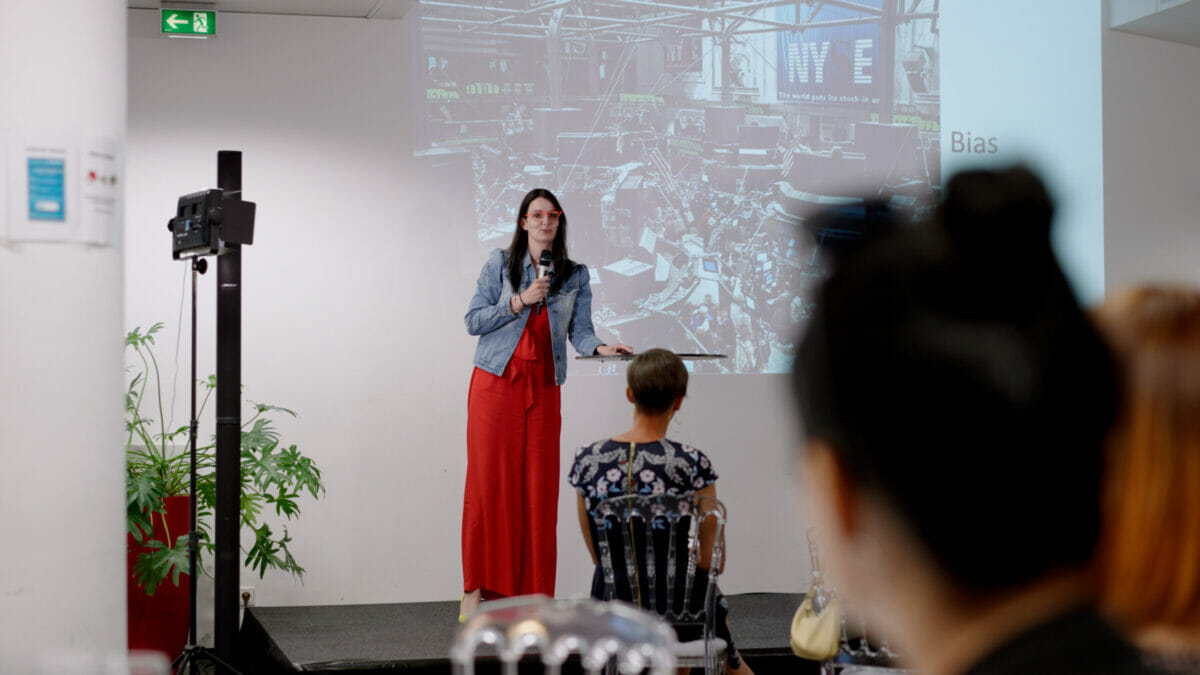
Beginning with her experiences as a young woman with a passion for trading, Emilie discussed how she was quickly confronted with the gender disparities within finance, whilst gaining work experience as a teenager. She began to reflect on the idea that, “when you speak about finance, you usually picture this trading floor and men, only men. In reality, it could be a little bit different with women inside.”

From this point onwards, Emilie set her sights on a career as a trader, later changing her path in order to become a financial advisor following the financial crisis. While speaking about this career change, she mused that although it was a “totally different story, totally different life”, she had the mindset that “no matter the steps, I can succeed and achieve what I want to do in my life.”
With this in mind, she kept learning, kept studying and took any opportunity that could lead down a path towards ‘new origins’, increasing her proficiency within IT, and soon becoming one of three women working within the newly founded IT Organization team at KPMG.
Emilie’s success showcases the significance of education in helping open up professional opportunities for women, and the importance of having access to knowledge not only in childhood, but throughout our adult lives.
Yet, when analyzing the statistics which represent the percentage of women within Finance from a university to professional level, it’s clear to see how quickly these rates depreciate, as women work their way up to more senior positions.
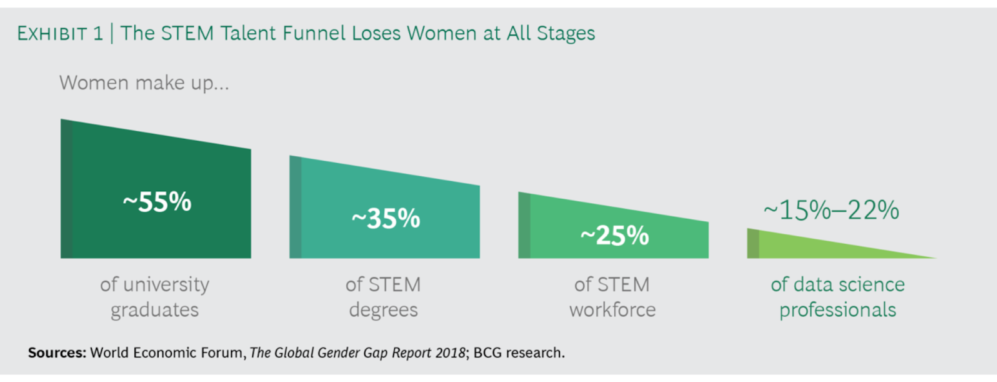
So how can we address these disparities? As Emilie states, “we are looking for role models, we are looking for more people to support diversity, to support initiatives.”
“Alone we’re empty, together we are the universe.” Through investing more significantly in the education of young women, and ensuring that women and men advocate for the inclusion of women within leadership roles, “we can achieve greatness’ – so, ‘break the walls, and fight for what you believe in.”

Diversity & Inclusion
Stéphanie (Deitz) Moulin, is a HR Business Partner, Sustainability, Wellbeing, Diversity and Inclusion Coordinator at ING Luxembourg.

Stéphanie talked about the importance of establishing the selection principle, “always choose the best candidate”. At ING, she continued “if we have two genders with the same level of talent, we have to choose the candidate who will improve their future team’s gender balance.”
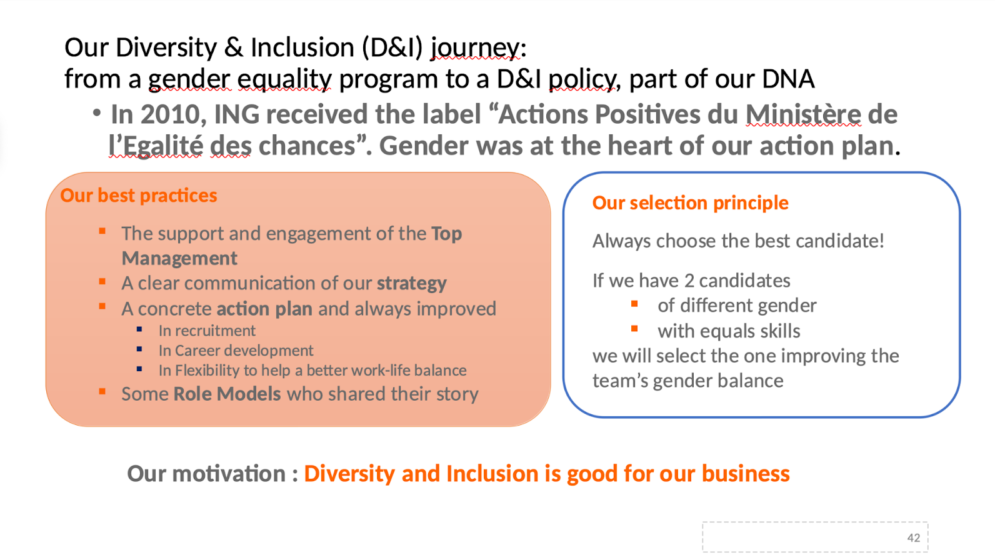
Exploring the significant role that C Suite can play in effectively supporting Diversity & Inclusion projects, Stéphanie highlights that ‘it’s important to have a view of diversity topics, and create something adaptable.’
When taking a further look at the best practices and selection principles within ING, it is clear to see that these tools can help engrain D&I initiatives into the culture of the company, leading to a company-wide motivation that “diversity and inclusion is good for business.”
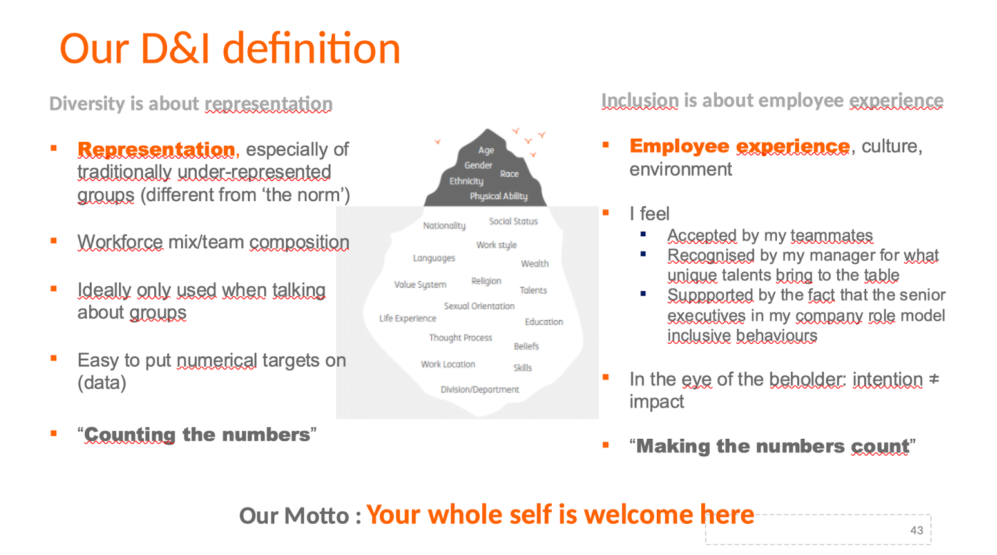
“It’s important to see the difference between diversity and inclusion”, Stéphanie mentioned. Diversity can be defined by representation, it’s centered around having a team which is made up of a range of individuals from different backgrounds, whereas inclusion focuses more specifically on the employee experience.
She also shared more insights on their 70% principle. This approach is centered around the company motto, “your whole self is welcome here” and focuses on creating groups or levels where there are no more than 70% of the same gender, nationality or age group. Not only does this ensure a diverse team which better represents the client and the market within which we work, but also helps to support the mindset that “if your team is balanced, everyone has the opportunity to speak up and be heard”, Stéphanie concludes.
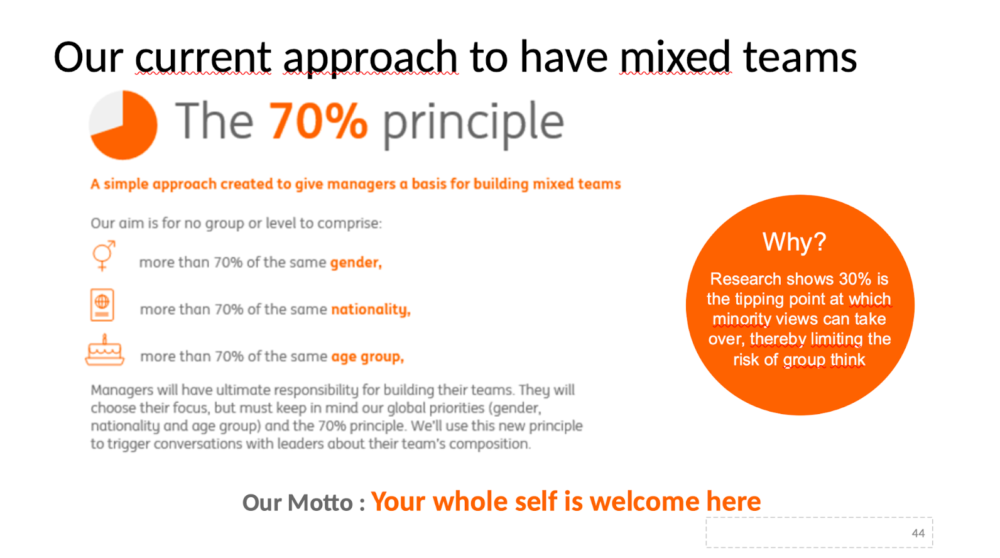
Maternity & Change Drivers
Delphine Mailloc, Marketing and Business Development Manager and CSR Ambassador for Simmons & Simmons Luxembourg LLP started up a discussion regarding the challenges women face within law firms. Presenting solutions to topics such as maternity leave, menopause, and the representation of women in leadership roles can all in fact be used as methods to support similar challenges faced by women within Fintech.
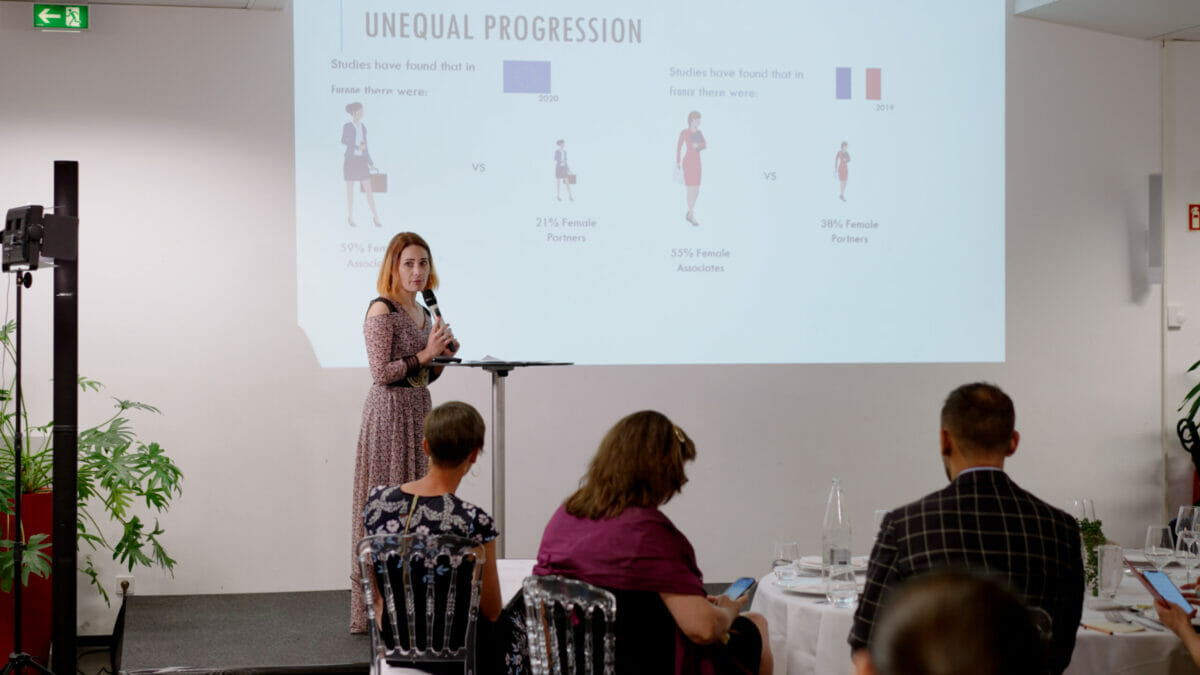
Delphine opened with the prevalent question, “you will see that women are well represented in the legal professional pipeline, until they reach partner level – then the number of women drops sharply. Why is that?” She reflects that this is due to a multitude of reasons, backed by an environment of conscious and unconscious bias. So how do we begin to address this problem?
Delphine starts with Motherhood. She explains that this is one of the core reasons as to why women in law are reaching the “glass ceiling”, mostly due to a tradition of billable hours. Though the flexibility of billable hours provides space for women to build their families, working part-time creates more challenges for women in the long-term. “We need to address the maternal wall head-on and scale it inch by inch,” she remarks. These are the three steps Simmons & Simmons have implemented in order to expedite this process.
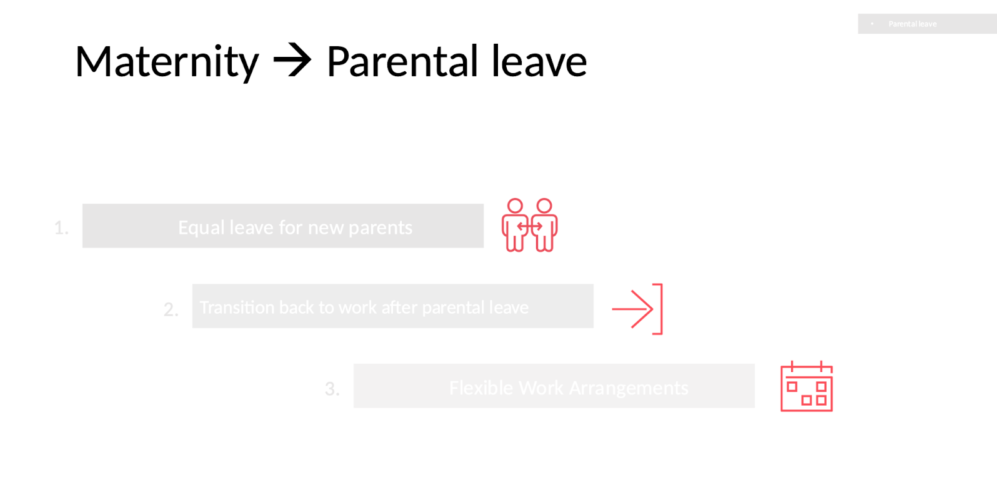
“Law remains a profession modeled on the male culture,” Delphine went on to explain, with one third of female lawyers leaving the bar to join in-house legal teams, this area of law is now recognised as a female-dominated sphere. “I’d like to focus not on the reasons why but on the consequences” she states, providing a thought-provoking figure that having greater gender inclusion would actually lead to an extra 10% in spend directly from the client.
This is due, as Delphine notes, to the fact that we are “human”, she goes on to explain “we are all more likely to support people, and to hire people who look alike, and in-house legal teams have the power to acquire law firms, to prioritize gender equality, and inclusion via a selection process.”
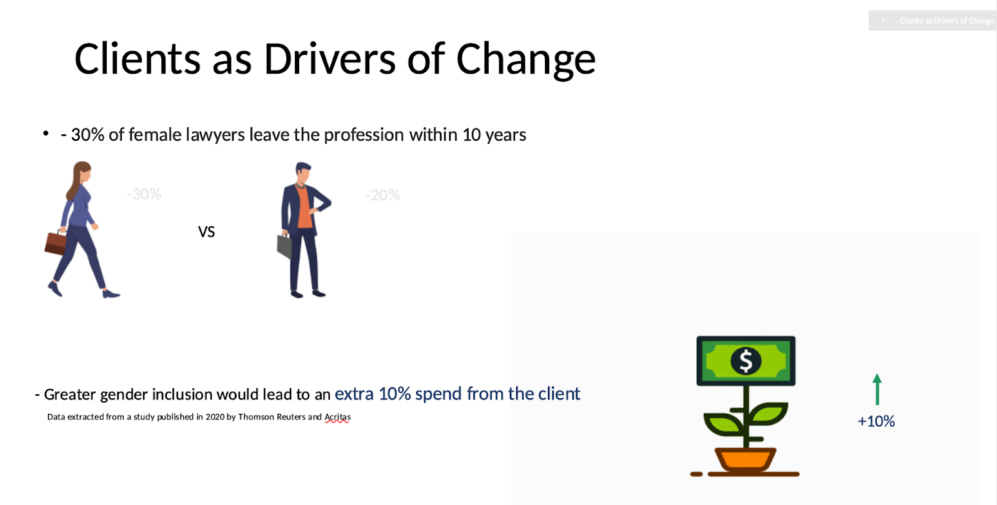
Finally, Delphine presented a range of additional measures taken by Simmons & Simmons in order to implement small shifts in supporting the progression of women.
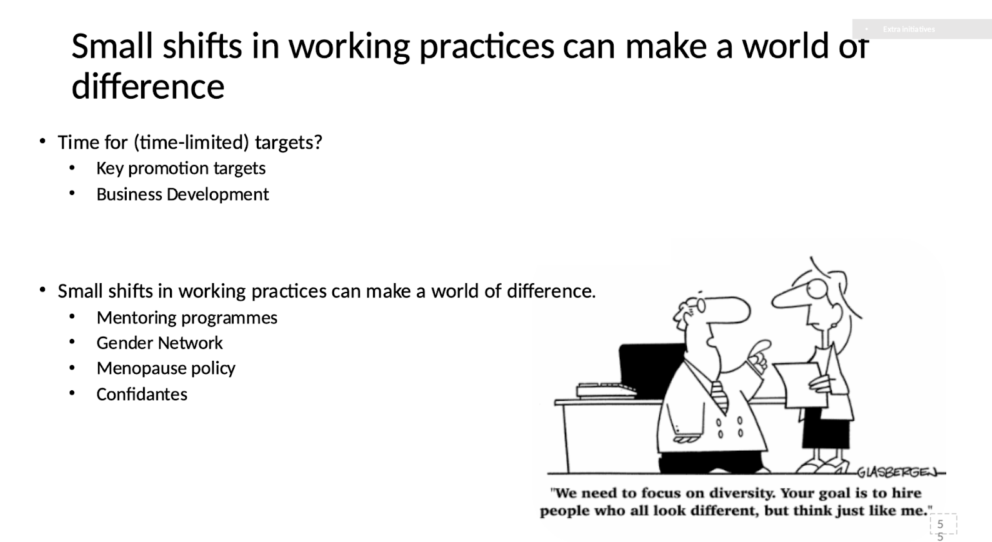
In 2021, Simmons & Simmons stretched their existing targets for female partner promotions, aiming to provide at least 50% of partner promotions to women.
On a business development level, the firm also introduced a practice which refuses to engage expenses when joint business trips do not have any female lawyers present. Although this may be seen as a tough measure, Delphine remarks, having this practice in place is an excellent way in ensuring that representation remains inclusive.
Aside from their mentoring program, “a highly effective tool for supporting women,” a final key practice is their approach to menopause. As Delphine states, “inclusion is really important throughout a person’s career, especially within key moments of someone’s personal life. Maternity is top of mind when talking about these ‘key moments’, however menopause is remains a significant aspect of the female experience, but yet is still a taboo topic for many.
At Simmons & Simmons, they have created a series of workshops and drop in sessions regarding menopause. In opening up this conversation, and exploring the ways in which we can support women across all areas of their life, we can begin to set our sights on a more inclusive environment for all.
Takeaways
The event concluded with a live survey where the audience discussed and shared their thoughts on the following questions:
Firstly, what are the main external obstacles that you recognise are existing in your organization? The top two answers amongst the crowd were Gender Bias and Lack of Role Models.
Secondly, what are the main takeaways you think you could implement in your company? A few of the many examples shared include: talking more about motherhood, needing quotas to help women enter leadership positions, recognizing that role models are still resoundingly absent and encouraging men to take on parental leave.
Want to continue to be informed and learn about how to be an ally and changemaker when it comes to gender inclusion? Subscribe to our newsletter.
The Author
 Darya Niknamian is a freelance writer and advocate of gender equality. For the last 10 years she has worked in the female empowerment space in North America, Asia and Europe. Her initiatives have provided hundreds of women with the tools and resources to take on leadership positions, found companies and ask for fairer salaries and working opportunities.
Darya Niknamian is a freelance writer and advocate of gender equality. For the last 10 years she has worked in the female empowerment space in North America, Asia and Europe. Her initiatives have provided hundreds of women with the tools and resources to take on leadership positions, found companies and ask for fairer salaries and working opportunities.

